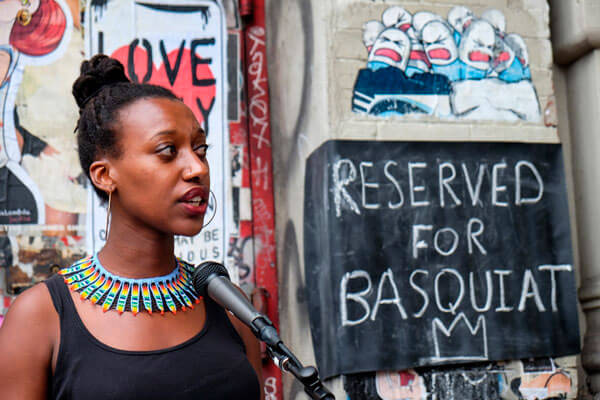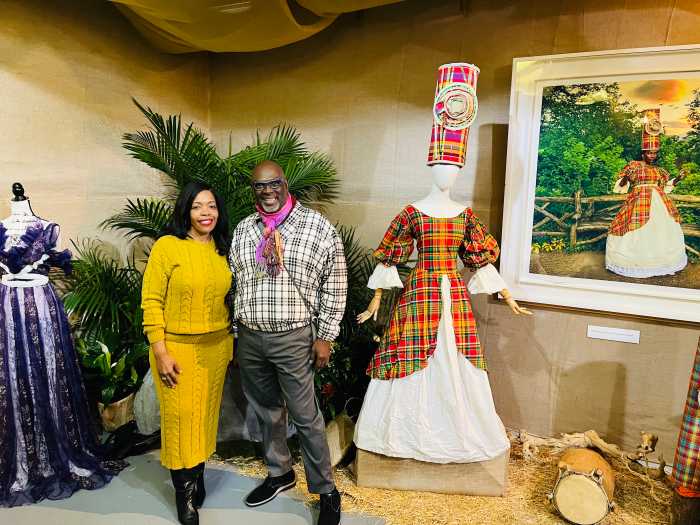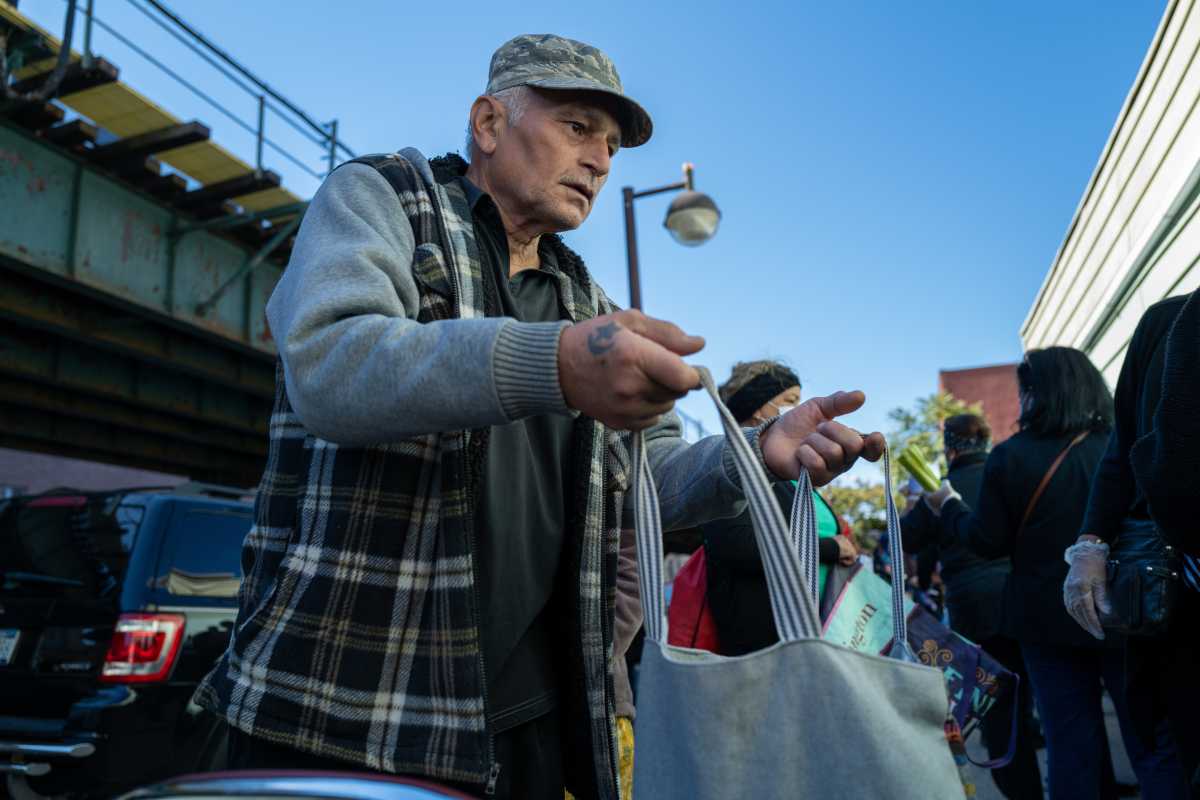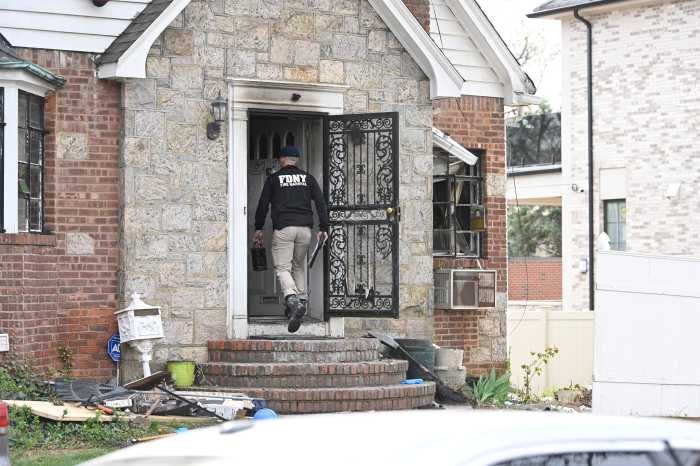A non-descript two-story building in NoHo, the area between the East and West Village, is covered with paste and stencil art. An anomaly to a gentrifying East Village, this building at 57 Great Jones Streets, a symbol of a bygone era, was the site where painter, collagist and musician Jean-Michel Basquiat lived and created work for five years until his death in 1988.
Last week, the Greenwich Village Society for Historic Preservation (GVSHP) honored Basquiat by installing a historic plaque at the doorway of the site of his work / residence.
The Jean Michel-Basquiat (1960-1988) plaque reads: “From 1983 to 1988 renowned artist Jean Michel-Basquiat lived and worked here, a former stable owned by friend and mentor Andy Warhol. Baquiat’s paintings and other work challenged established notions of high and low art, race and class, while forging a visionary language that defied characterization.”
The artist joins other creatives who lived or worked in this part of Manhattan and are likewise recognized. Writer James Baldwin — his home, and dancer and teacher Martha Graham, her rehearsal space was in the Village, are also honored through the historic plaque program, co-sponsored by GVSHP and Two Boots.
Basquiat was the son of a Haitian father and a Puerto Rican mother. This innovative artist born in Brooklyn melded his urban American experience with his African-Caribbean heritage. He first achieved notoriety as part of the graffiti duo SAMO. By the 1980s he was exhibiting his work, a mixture of text, abstraction, figures, and historical information mixed with social commentary. Basquiat died of a heroin overdose at the age of 27.
In 2005, the Brooklyn Museum mounted a major exhibition of his work and in 2015, the Museum exhibited the artist’s notebooks filled with poetry fragments, wordplay, sketches, and personal observations ranging from street life and popular culture to themes of race, class, and world history.
In May of this year, an untitled painting by Basquiat broke the artist’s world auction record and sold for $57.3 million at Christie’s.
At the plaque unveiling last week, the artist’s friend from that era Michael Holman called Basquiat an alchemist whose talent was the transformation of materials.
Ayanna Legros reminded those at the dedication that Basquiat created more than 2,000 images with subject matters of slavery, colonialism, rape, religion, gender and the Diaspora. “He pushed boundaries and it made (some) people uncomfortable,” she said. “This plaque serves as a reminder for us to think about legacy. Basquiat was aware that he lived in a world of contradictions that operate on prejudices. He managed to make himself one of the most recognized American painters of the century.”
Haitian-American Legros, along with her graduate studies at NYU, immersed herself in the life and impact of Jean-Michel Basquiat and co-founded the Basquiat Still Fly at 55 Project, dedicated to explore the artist’s life, legacy and the impact on African Diasporic communities across the globe.
She concluded in her remarks, “He figured out how to navigate an art world that wasn’t prepared for his messages.”



























